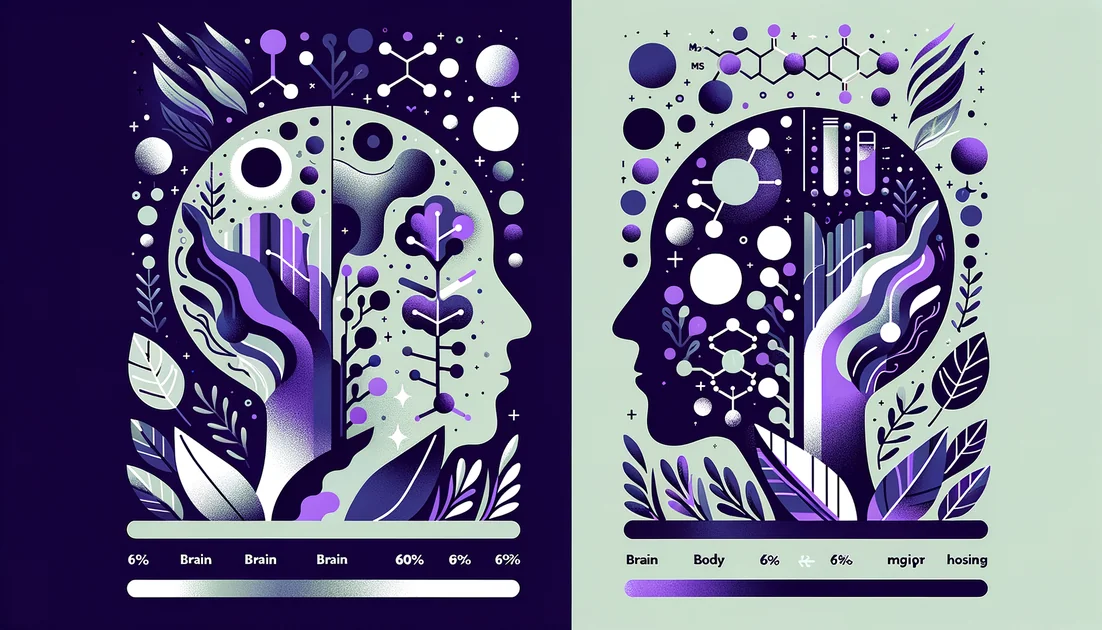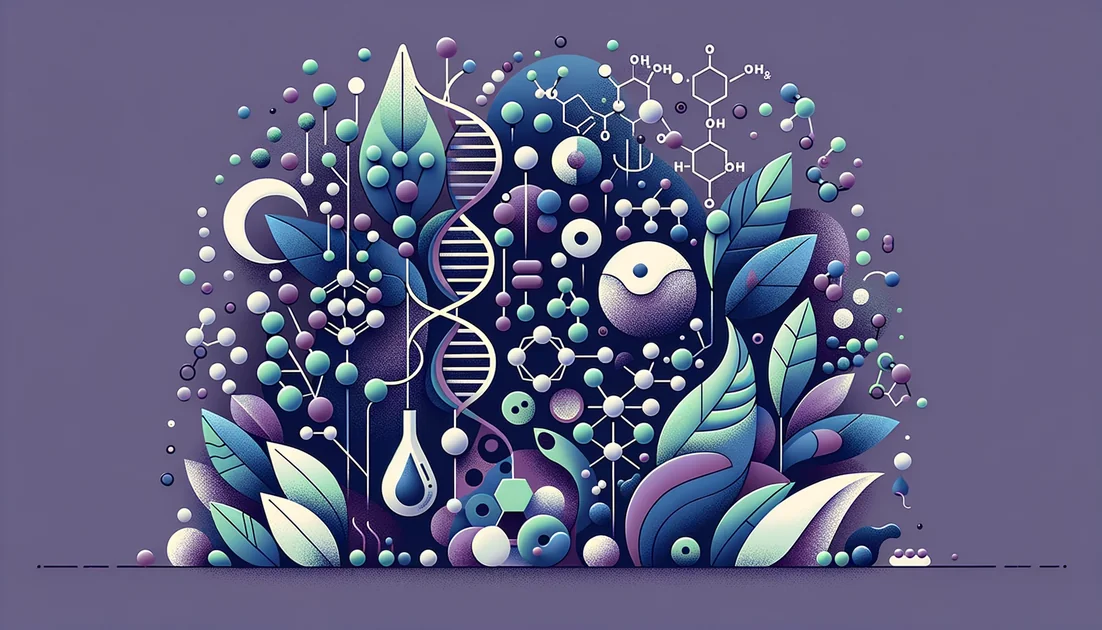
The Quiet Power in the Energy-Drink Molecule: How Taurine Calms, Protects, and (Maybe) Slows the Clock
You crack an energy drink and brace for a jolt. Hidden beneath the caffeine and fizz is taurine—the molecule that, paradoxically, tends to quiet nerves, steady vessels, and help bile do its ancient digestive work. It was first pulled from ox bile in 1827 and named for the bull, yet its real talent is closer to a whisper than a roar. [1][2]
- Evidence
- Promising
- Immediate Effect
- Within hours (for some exercise settings with acute dosing). → 6-12 weeks for blood pressure and metabolic markers.
- Wears Off
- Unknown; likely gradual after discontinuation.
From bile to bedside
In the 19th century, chemists Friedrich Tiedemann and Leopold Gmelin isolated a mysterious substance from ox bile and named it "taurine," after taurus, the bull. Decades later, physicians began noticing that where taurine ran low, trouble followed—especially in the retina and heart. Today, taurine sits at the crossroads of digestion, nerve signaling, and metabolism, more like a universal adapter than a single-purpose gadget. [1] Here's the first surprise: while marketing pairs taurine with stimulation, biology often pairs it with composure. In brain circuits, taurine can nudge the same "calm-down" receptors that GABA and glycine use, turning the volume knob down on overexcited neurons—the nervous system's equivalent of dimming harsh fluorescent lights. [3]
A child's vision, flickering—and returning
Consider a stark clinical story from the era of early home IV nutrition. Children receiving long-term parenteral nutrition (which then lacked taurine) developed abnormal retinal electrical signals—like a city grid flickering at night. When clinicians added taurine to the IV mix, plasma levels rose and, in three of four children, the retinal signals normalized. The lights steadied. [7][8] That scene explains taurine's second job: it teams with bile to package fats so we can absorb them, and in doing so it helps maintain the lipid-rich architecture of delicate tissues like the retina. In the liver, taurine acts like a shipping label that turns caustic bile acids into gentler, water-soluble parcels—taurocholates—that move fat through the gut more efficiently. Human studies even show we can tilt the body's bile-acid labeling toward taurine with supplementation. [19]
Blood pressure, quietly lowered
Fast-forward to a rigorously designed trial in prehypertension. Over 12 weeks, 1.6 g/day of taurine lowered clinic systolic pressure by about 7 mm Hg and diastolic by ~5 mm Hg versus placebo—numbers that matter at scale. The same study found better vessel relaxation and a rise in hydrogen sulfide, a gas the endothelium uses as a vasodilatory signal—like opening extra lanes on a congested highway. [4] Zooming out, a 2024 meta-analysis pooling 25 randomized trials (1,024 participants) found modest but meaningful improvements: lower systolic/diastolic pressures, fasting glucose, and triglycerides—with no signal of harm in the studied ranges. Think of taurine as a small rudder—subtle on its own, but able to steer trajectories over months. [5] In heart failure—a condition where the heart's timing and efficiency falter—two weeks of 1.5 g/day improved functional capacity and electrical stability in a small double-blind trial. Not a cure, but a cleaner rhythm and a little more runway for effort. [6]
The aging debate: signal, noise, and caution
In 2023, a high-profile paper lit up headlines: taurine levels fell with age in animals and humans; restoring them extended lifespan in mice and improved health-span in monkeys. Mechanistically, taurine seemed to reduce cellular "fraying" (DNA damage), tamp down chronic inflammation, and improve mitochondrial performance—like servicing the body's power plants and fire alarms. [9] The lead investigator, Vijay Yadav of Columbia University, framed the allure—and the restraint:
"This study suggests that taurine could be an elixir of life within us that helps us live longer and healthier lives." [10]
And yet, his collaborator Henning Wackerhage at TUM kept a scientist's hand on the brake:
"The results of the animal experiments are impressive.. But we don't know whether they can be applied to humans.. what we really need now is a human intervention study." [11]
In 2025, NIH researchers complicated the picture: in longitudinal human and animal cohorts, taurine did not consistently decline with age, and associations with function were inconsistent—more a mosaic than a single arrow. Their conclusion: taurine is unlikely to be a reliable biomarker of aging, and its effects may depend on individual context. Translation: promising mechanisms, yes; automatic anti-aging label, no. [12]
The paradox inside the can
So why does a "calming" molecule sit inside drinks sold for energy? Two reasons. First, taurine doesn't energize in the way caffeine does; it fine-tunes. In athletes, acute taurine sometimes extends time to exhaustion—particularly in heat—perhaps by improving heat dissipation and metabolic efficiency, though results are mixed across protocols. Think of it as giving your engine cleaner combustion under strain, not a turbocharger. [13][14] Second, taurine earned cultural visibility through energy drinks long after biochemistry had placed it in bile and brain. Regulators evaluating typical energy-drink levels focused their safety lens primarily on caffeine; taurine at standard beverage concentrations was not a concern. But beverages bundle stimulants and sugar; the molecule's story is broader than the can. [17]
Practical takeaways woven from the evidence
Doses that moved the needle in trials were typically 1.5–3 g/day for 8–12 weeks for blood pressure and metabolic markers; small cardiac studies used 1.5 g/day for two weeks. Acute exercise studies used 1–6 g taken 1–3 hours pre-effort. [4][5][6][14]
Safety: the FDA recognizes 3 g/day as an observed safe level for chronic intake; EFSA has cited up to ~6 g/day as an observed safe level in humans, and typical beverage doses are well below toxic thresholds. As always, individual tolerances vary. [15][16][17]
Who might notice benefits? People with prehypertension or clustered metabolic risk; athletes training or competing in heat; and those consuming minimal dietary taurine (vegans show lower plasma and urinary taurine, though the body can synthesize some). [4][5][13][18]
One nuanced caveat: if you already have low blood pressure or take multiple antihypertensives, taurine's gentle BP-lowering effect may stack—worth discussing with a clinician. [4]
Why taurine feels like a systems nutrient
Taurine doesn't slot neatly into "brain" or "heart" or "gut." It's more like a background technician: labeling bile acids so fats move smoothly, stabilizing membranes so cells ride out stress, and easing neural overactivity when sparks fly. Even the aging story—spanning mitochondria, inflammation, DNA maintenance—reads like a systems checklist rather than one magic switch. [3][9][19] The humility in this story matters. The best evidence today supports small, steady improvements in cardiovascular and metabolic metrics, with intriguing (but unproven) possibilities in aging biology. As Prof. Wackerhage put it, we need the definitive human trials; until then, taurine isn't a fountain of youth—it's a versatile tool with a quiet touch. [11]
If you try it, make it boring
Skip the fireworks. Use a plain, third-party-tested taurine powder or capsule. Take 1–3 g/day, often split with meals, and give it 8–12 weeks before judging changes in blood pressure, fasting glucose, or triglycerides. If you're experimenting for training, 1–3 g an hour or two before a demanding session is common; expect subtlety, not spectacle. And remember: your daily plate still supplies the scaffolding—especially if it includes fish and dark poultry; purely plant-based diets provide little taurine, though seaweeds contribute some. [5][14][18] In the end, taurine's tale loops back to its origins. Pulled from bile, woven through nerves, present in muscle, it is less a headline act than a pit-crew chief. Quiet competence rarely makes a splash—but it wins long races. [1]
Key takeaways
- •Taurine often acts as a calming neuromodulator, engaging GABA/glycine pathways to dial down neuronal excitability rather than stimulate it.
- •Clinical signals are promising: trials show reduced blood pressure, better vascular function, and improved cardiac markers, with no major adverse events reported.
- •For cardio-metabolic goals, 1.5–3 g/day for 8–12 weeks is common; athletes may use 1–6 g about 1–3 hours pre-training for acute support.
- •Practical timing: split daily doses with meals for steady exposure; expect gradual benefits over weeks, not an immediate "energy" effect.
- •Safety notes: FDA observes 3 g/day as safe and EFSA cites up to ~6 g/day as observed safe; monitor if hypotensive or on blood-pressure meds.
- •Who may benefit: people with prehypertension/metabolic risk, athletes (especially in heat), low dietary intake (e.g., long-term vegans), and older adults—while anti-aging effects in humans remain unproven.
You might also like
Explore more of our evidence-led investigations, comparisons, and guides across every article style.

Nutricost
Nutricost's Value Paradox: Strong Prices on Basics, Uneven Transparency on Testing

Magnesium L-Threonate (Magtein) vs Magnesium Glycinate (bisglycinate/diglycinate)
For brain-first goals (executive function, sleep architecture), choose Magnesium L-Threonate. For body-first goals (raising magnesium, muscle/nerve support) with good GI tolerance and value, choose Magnesium Glycinate. [2][4][1]

Best for longevity
Selenium 200 mcg + CoQ10 200 mg daily (4 yrs) — mortality signal [2]

NAD+
A century ago, a mysterious rash and dementia swept the American South. The cure hid not in a pharmacy but in bread flour. Today, the same molecular currency that quietly powered those loaves—NAD+—is at the center of a new, more complicated story.

Lion's Mane + Bacopa: Smart Memory Duo or Just Hype?
The combo is a theoretical dual-pathway stack (neurotrophic + cholinergic), but there are no direct head-to-head studies proving synergy.

Tocotrienols
The stealthier cousins of vitamin E—built with springy tails that move differently in cell membranes and behave differently in your body.
